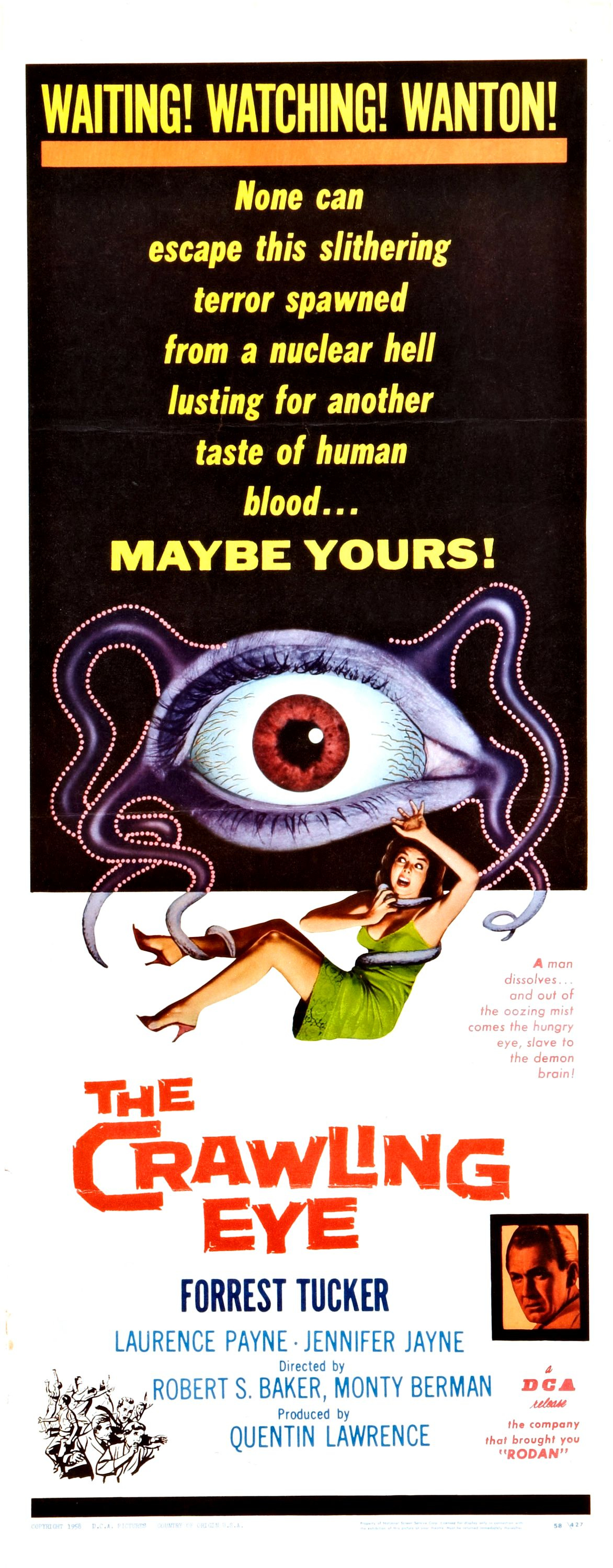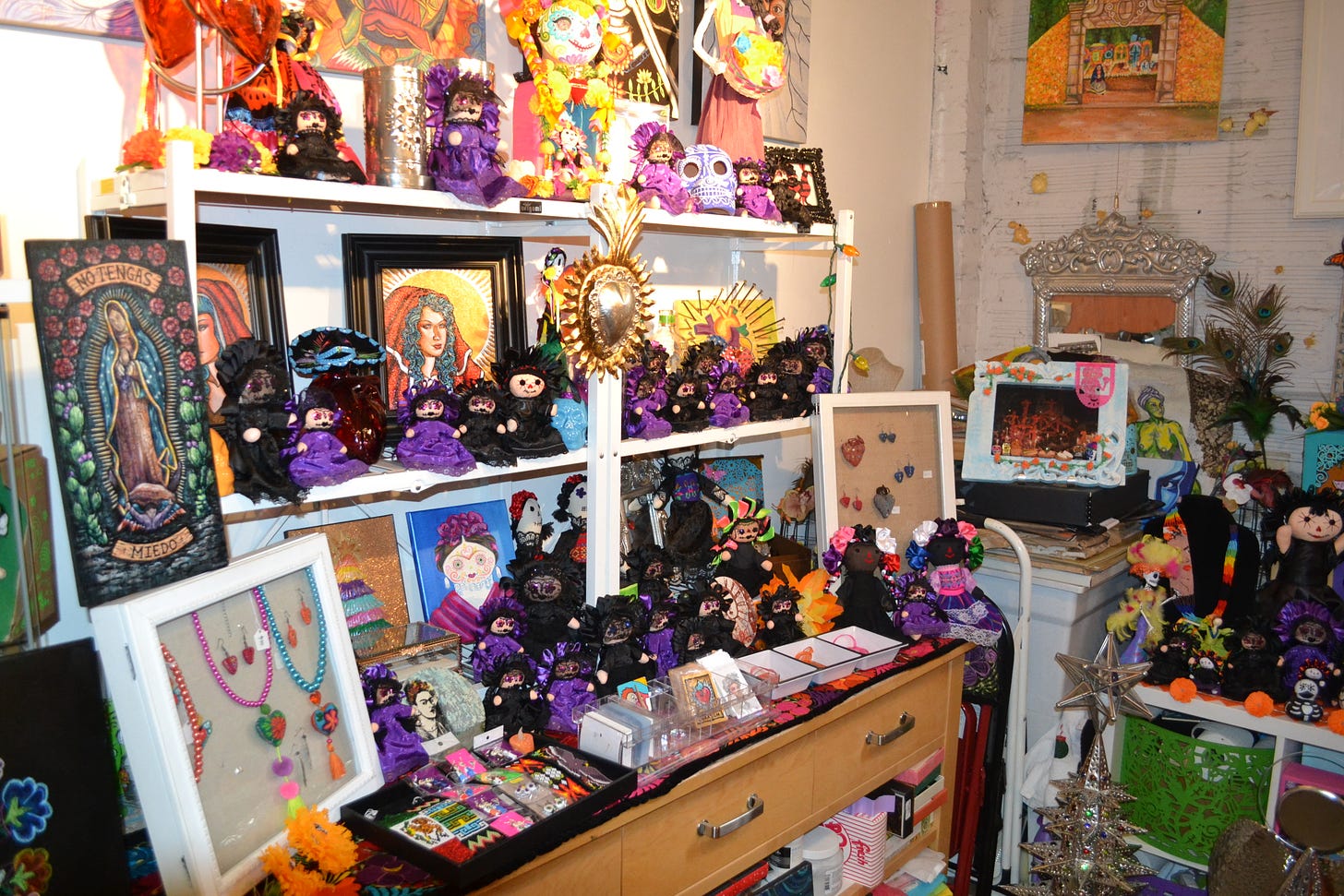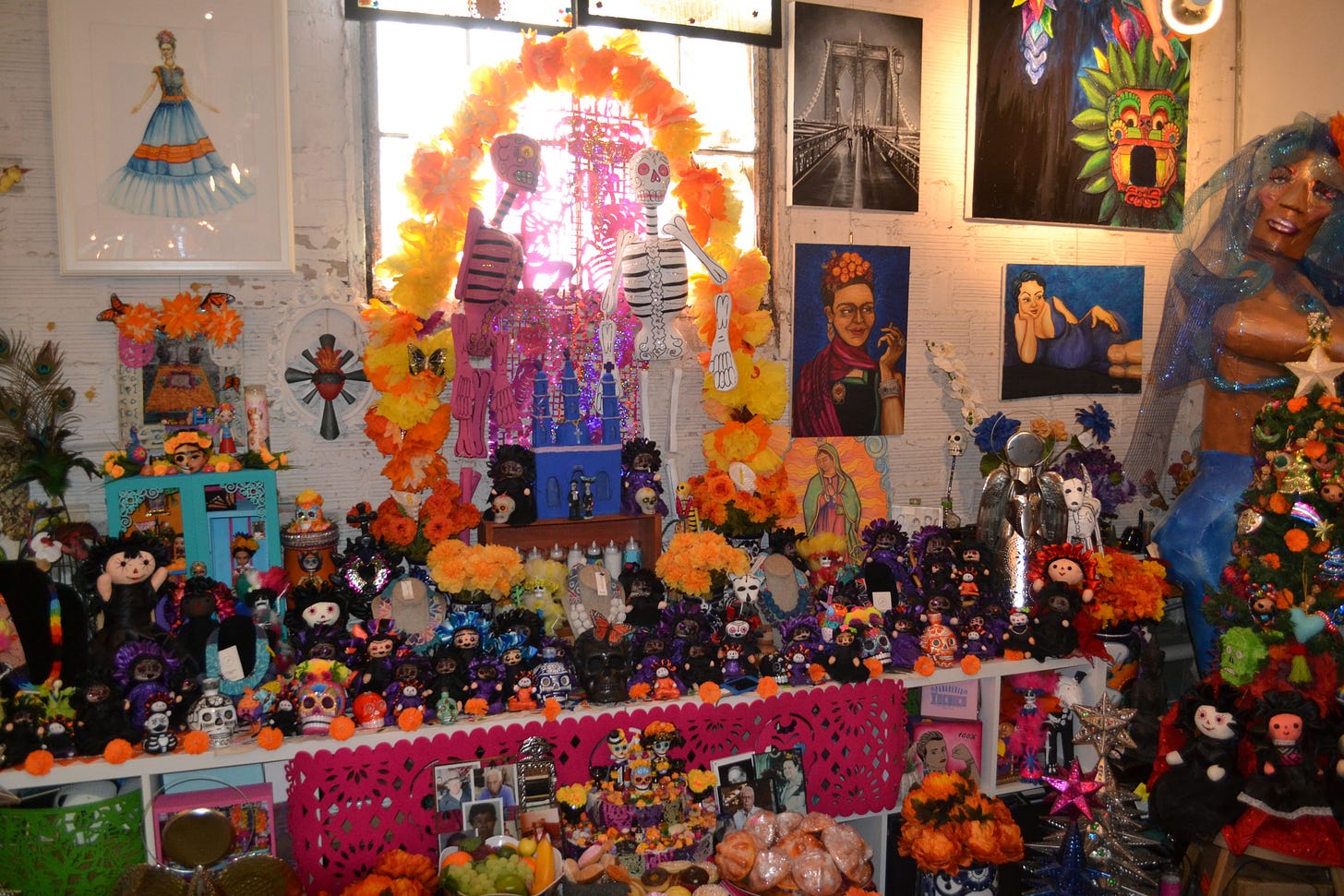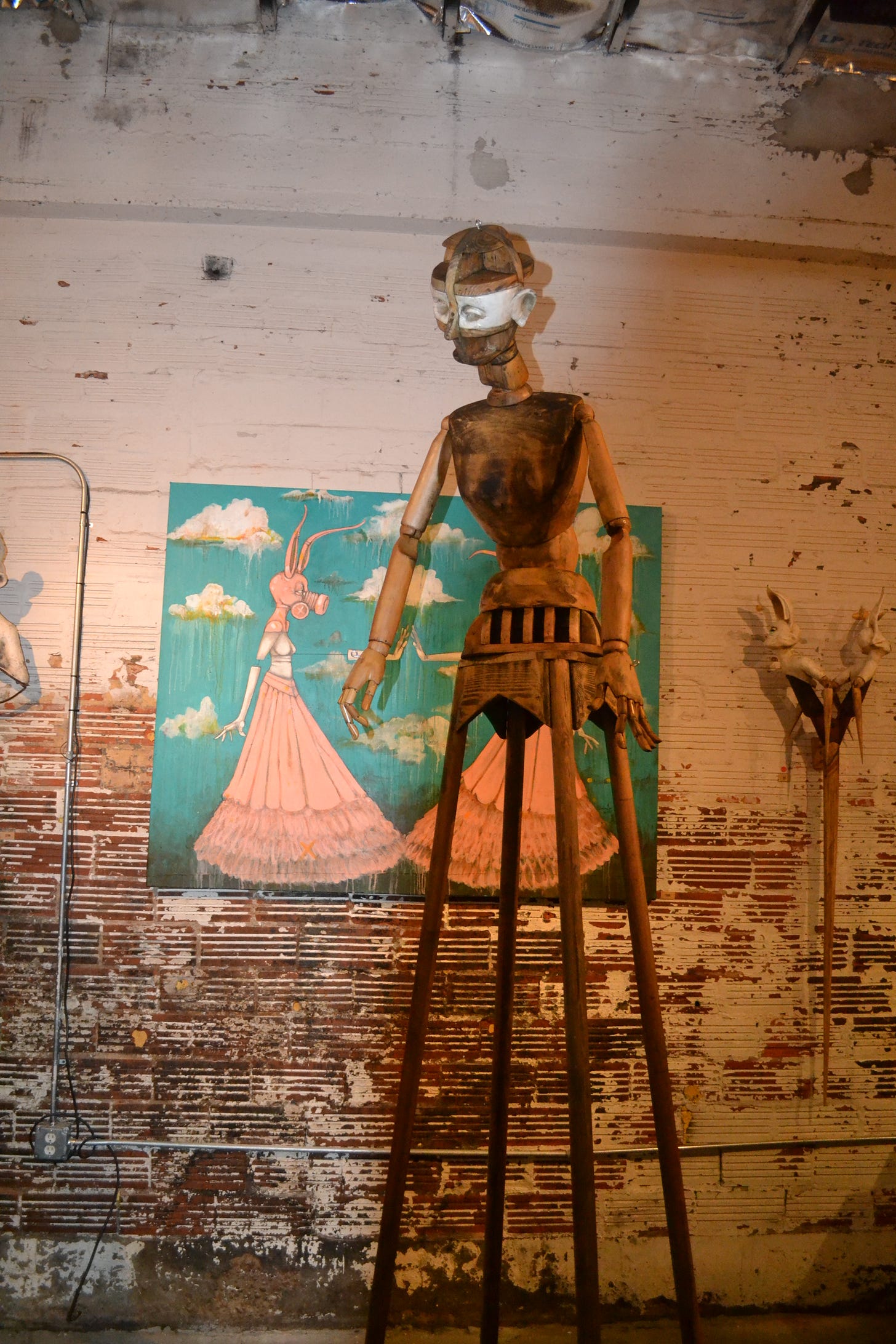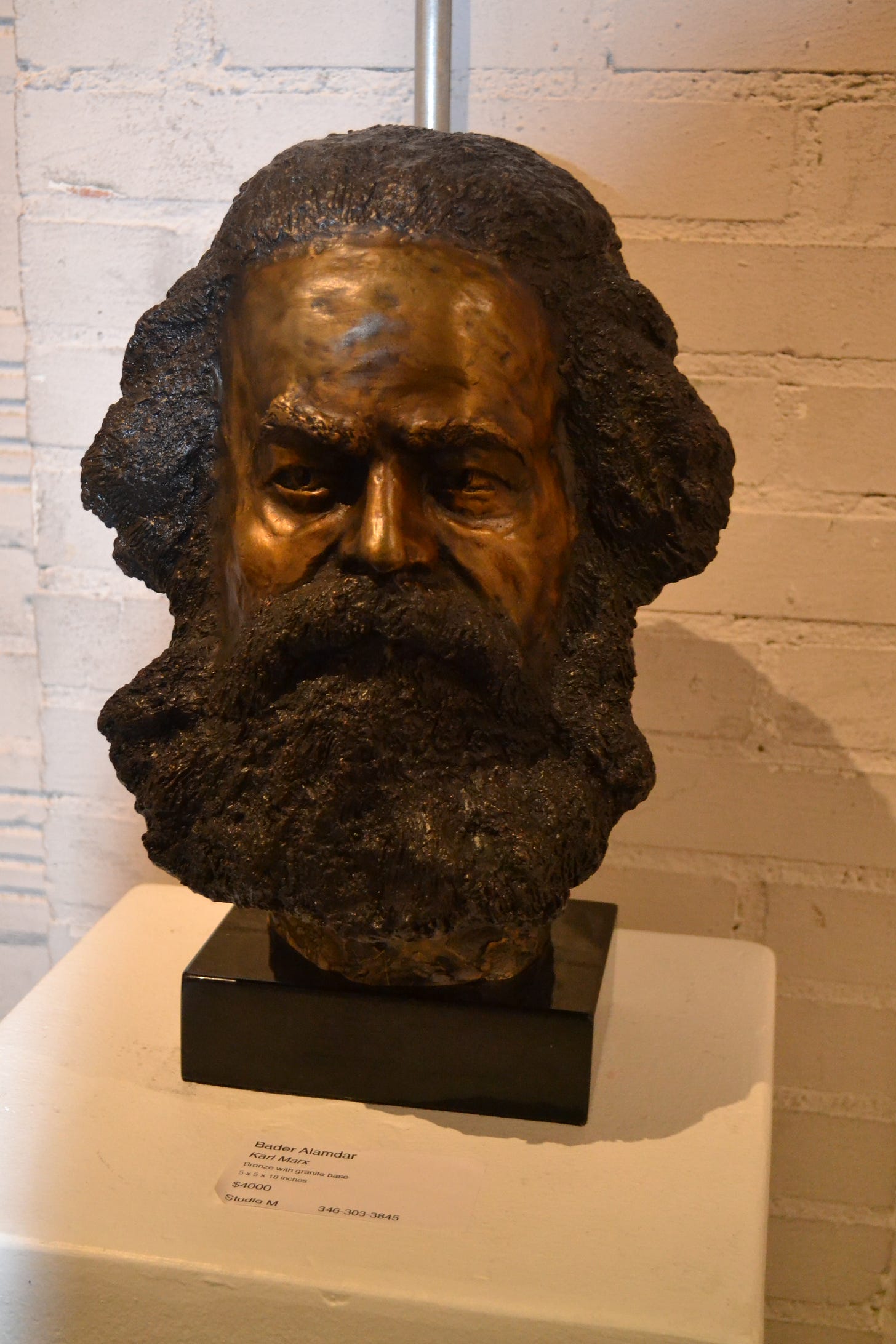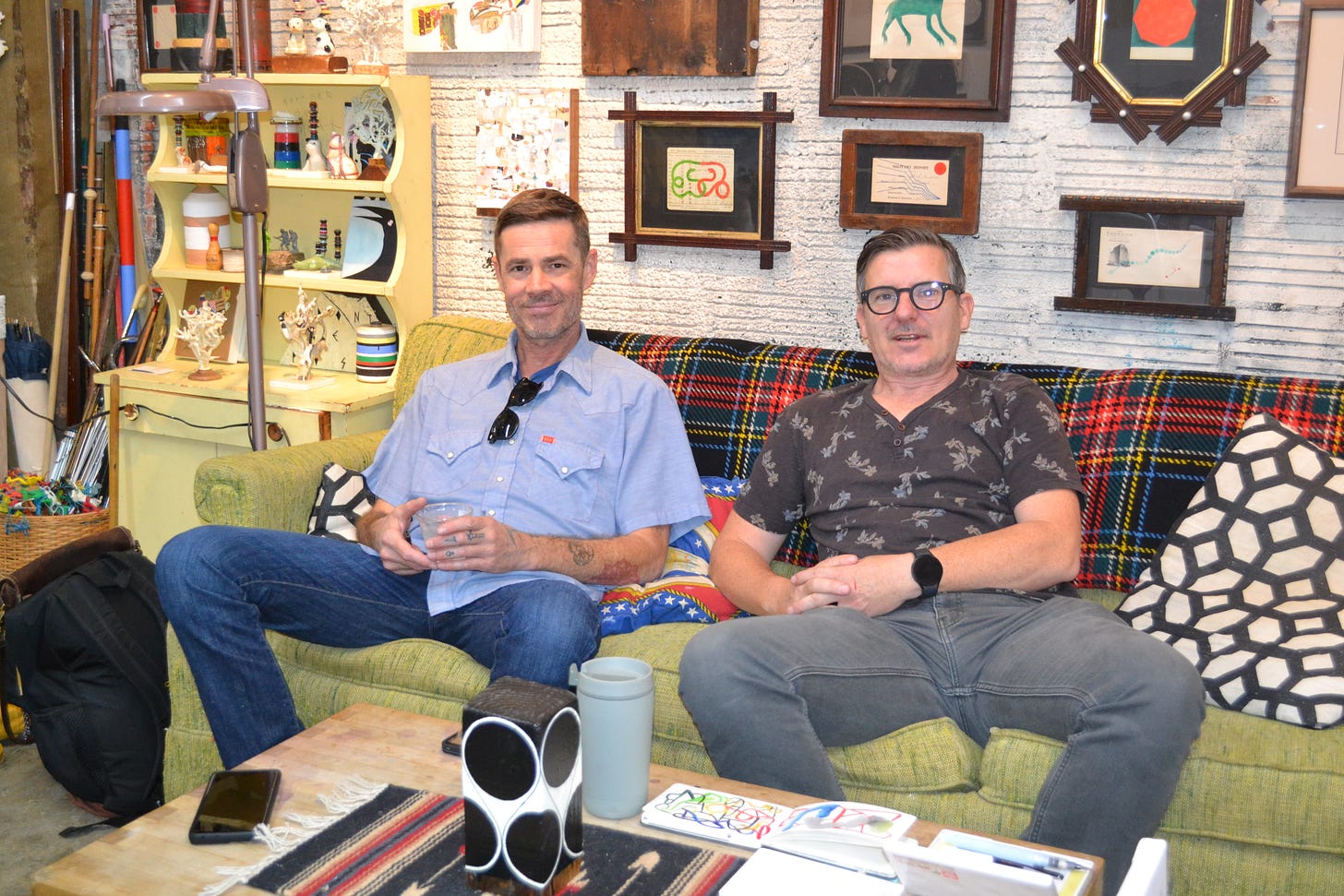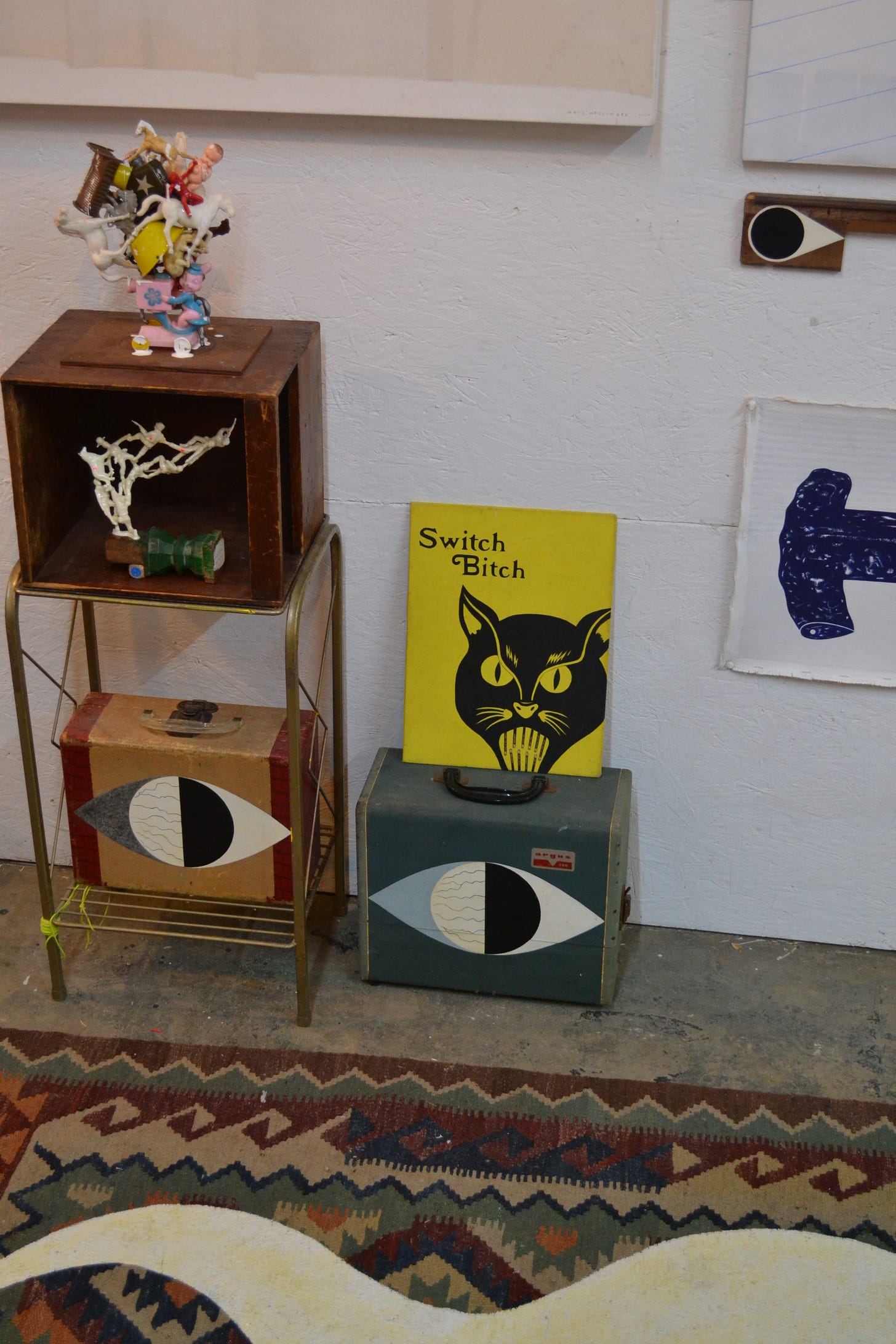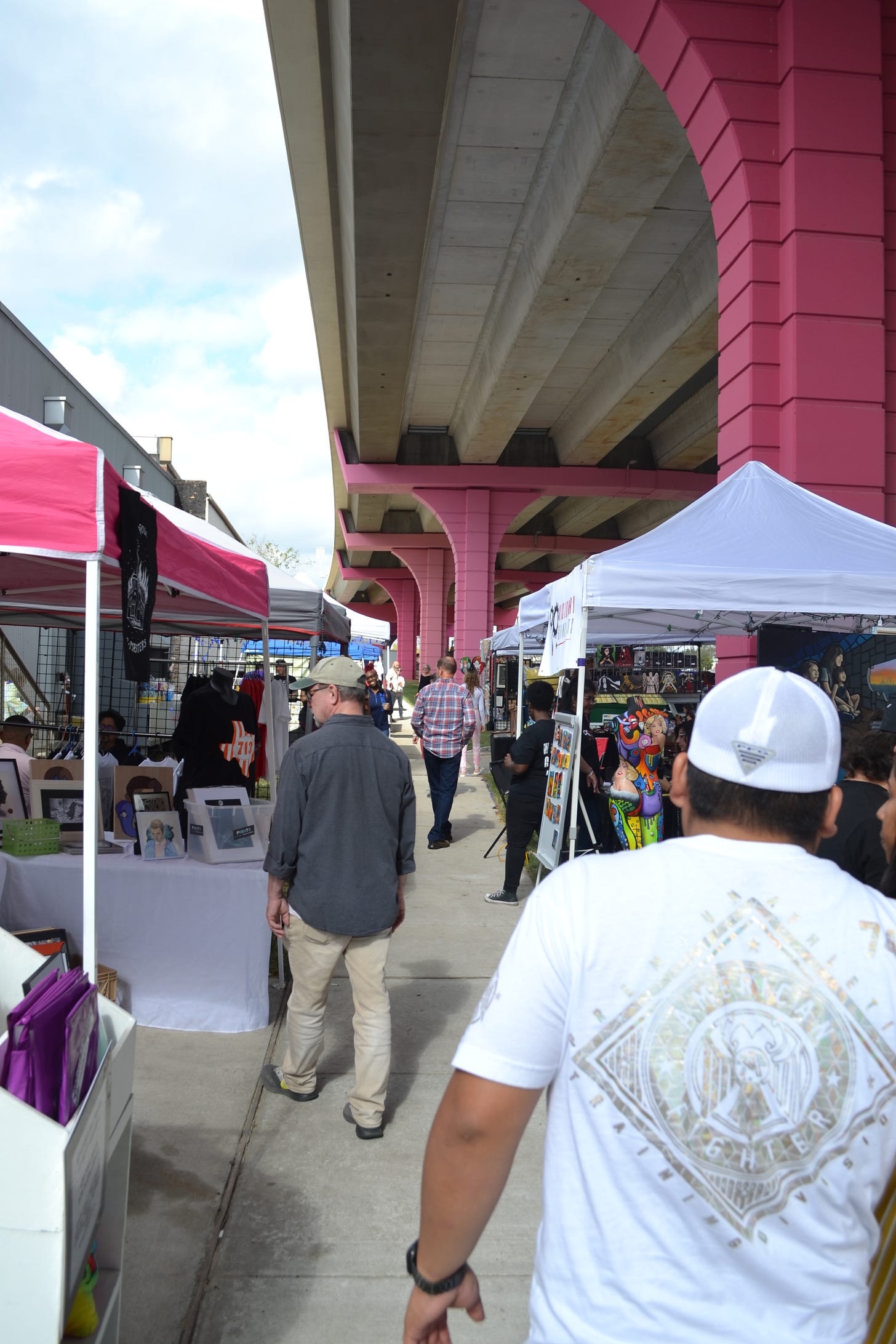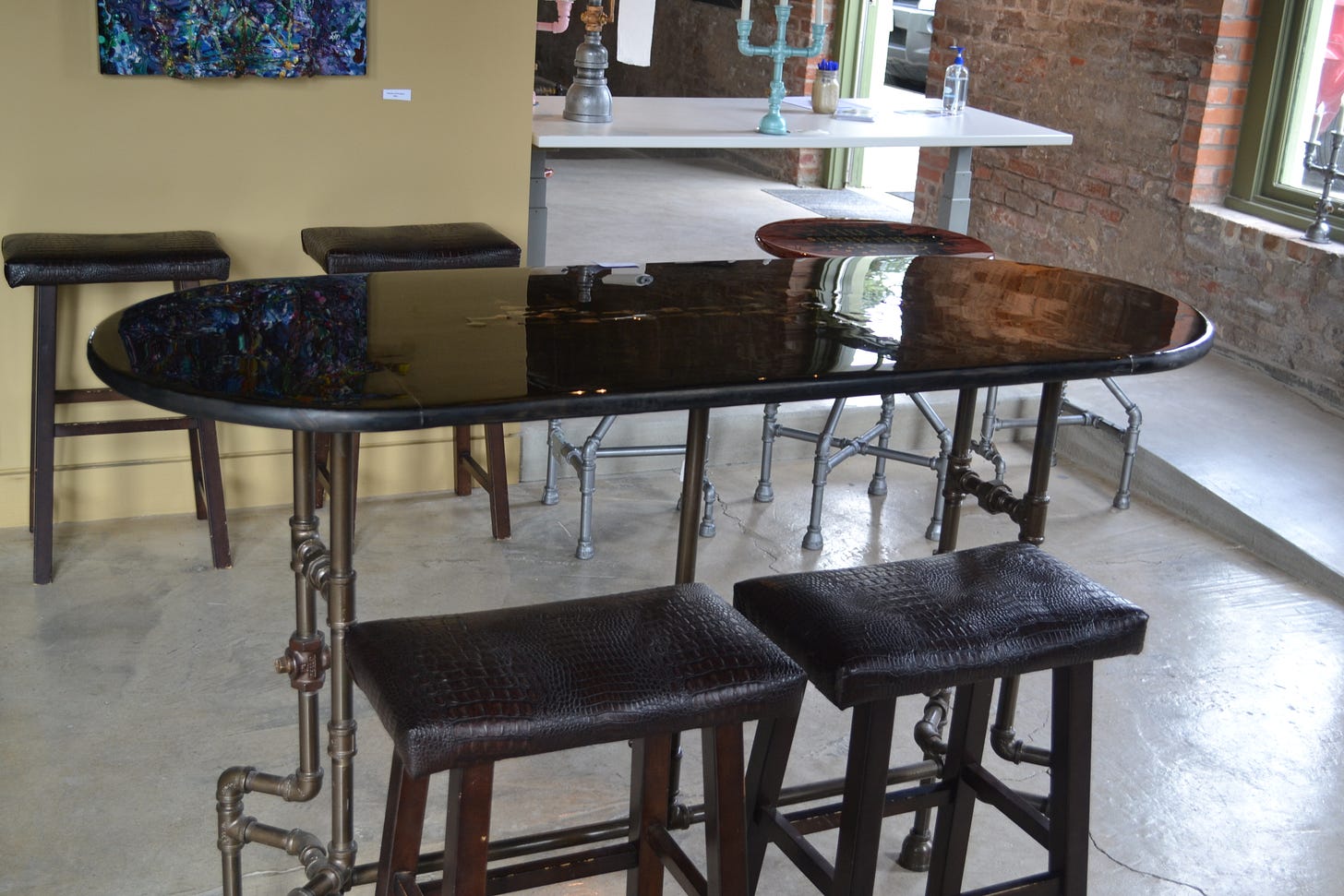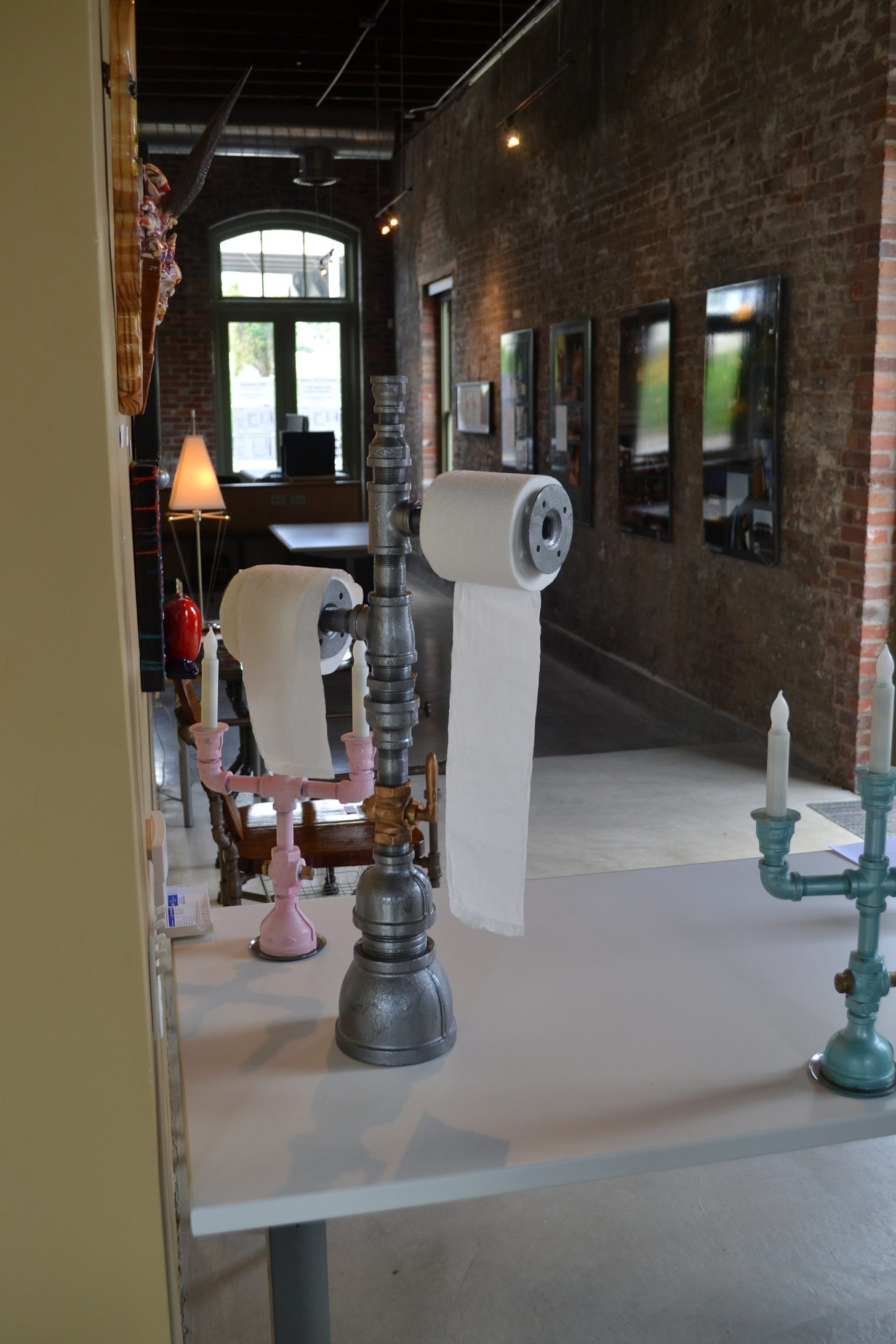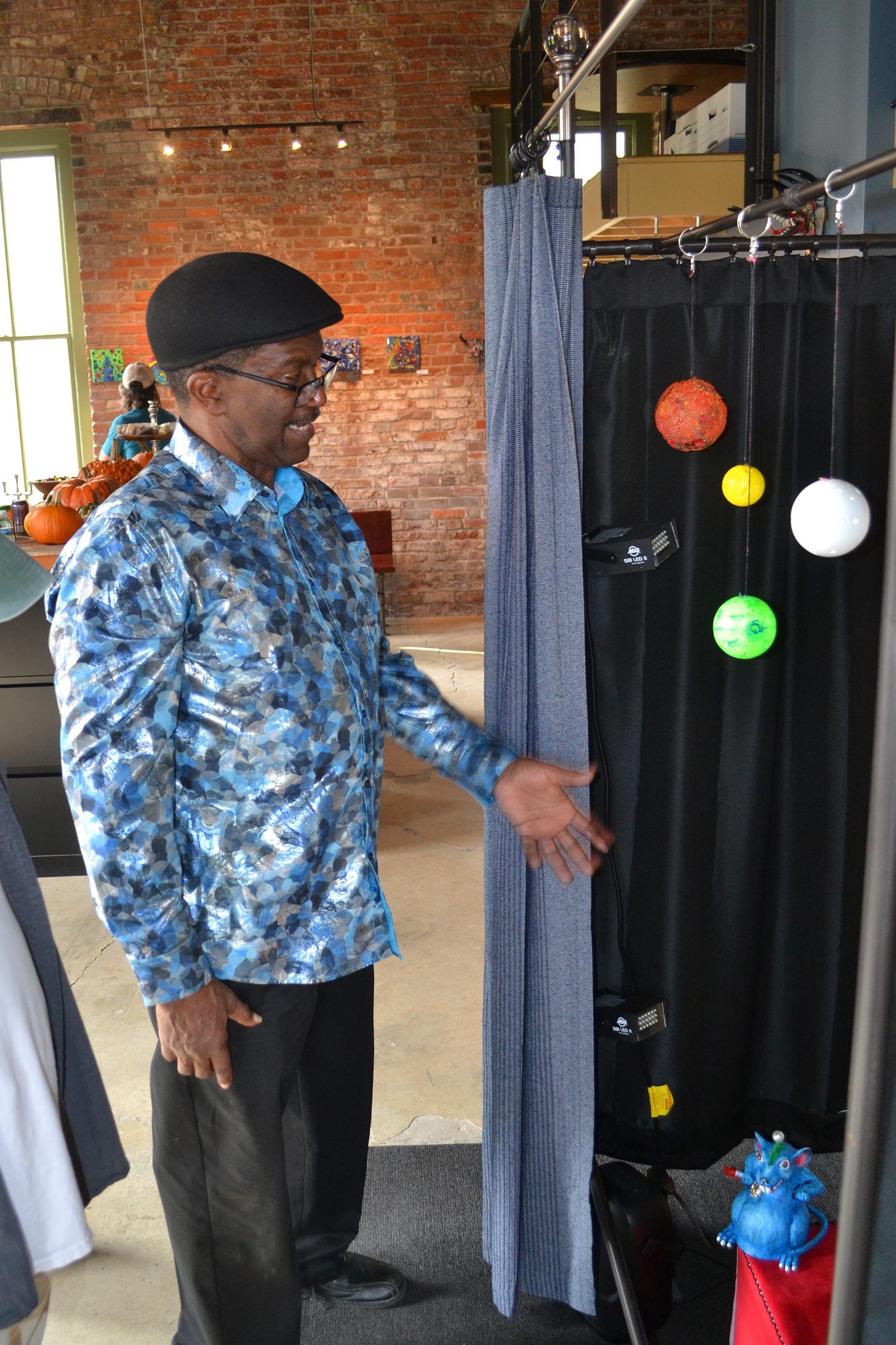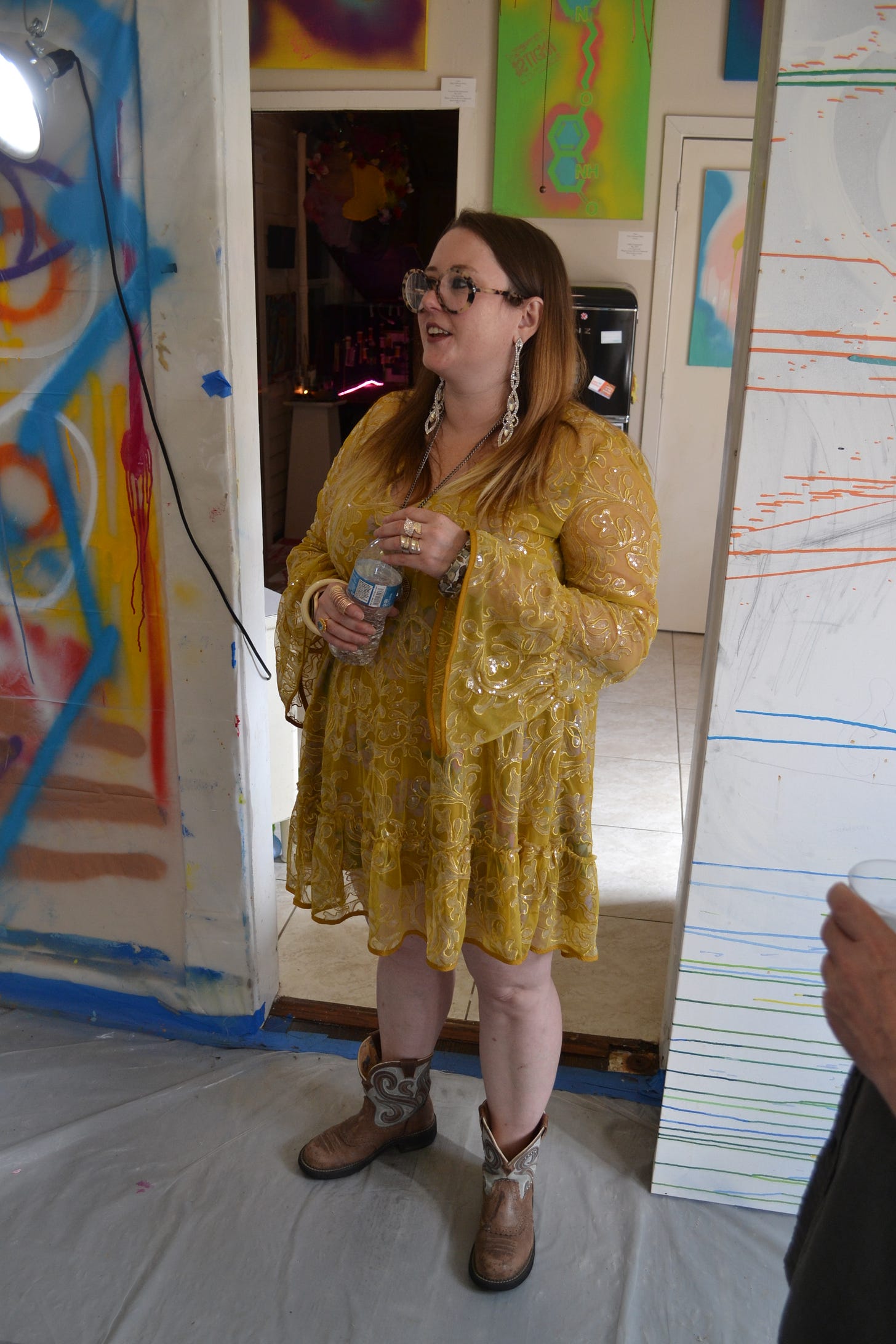The Crawling Eye
Art Crawl has been going on since 1992. It didn’t happen last year because of Covid, but it came back in a more modest form this past Saturday. A friend and I decided to check it out. We met at Mother Dog Studios to check out the art. Mother Dog always hosts an art exhibit in the west bay of their building.
This year Earl Staley was given half of that space and showed a bunch of his self-portraits. They were being sold at exceptionally good prices—my companion bought two!
Mother Dog Studios has been in existence since 1986. Founded by artists Charlie Jean Sartwelle and John Runnels, they were pioneers in refurbing disused industrial space north of downtown. There is a clump of warehouses nestled between Buffalo Bayou and I-10, and that has always been the home base for Art Crawl. The intent is to see artists studios, but it has evolved to include vendors and a street festival vibe, as well as more and more distant outposts. In years past, you had to get in your car to visit all the venues. This scaled back version was much more modest. I think like Zine Fest (the week earlier), they’re still testing the post-COVID waters.
It’s nice to go into artists’ studios, but in an open studios even like this, they’re all cleaned up. They have the grungy lived-in look erased for visitors.
This studio had these large paintings with a bunch of birds. I think the art might be by Molly Koehn, but I might be mistaken. On Molly Koehn’s website, there is no art that looks quite like this. (If you are the artist or Molly Koehn, please leave me a note in the comments.) Anyway, I liked the repetition of birds. To paraphrase Hennessy Youngman, one bird is not art—but a lot of birds? Art.
Next, we walked over to Hardy & Nance studios, noticing how many warehouses in the neighborhood have been torn down. It took a while, but it looks like this area is in the midst of gentrifying. In retrospect, it is obvious that it would. A chunk of land this close to downtown can hardy avoid it, although I would think the looming presense of the Harris County Jail in the neighborhood might turn off the yuppie colonists.
Lizbeth Ortiz had the busiest studio I say. Every square inch was covered with stuff.
It was all neat and tidy, but still cluttered. I like clutter. I am a fan of horror vacui. While I admire clean, white cubes and Marie Kondo-approved, Architectural Digest-ready modernist minimalism, I know I couldn’t live like that. Everywhere I have lived tends towards density of stuff: books, art, geegaws, etc. Ortiz, in turning her studio into a showcase, has created the perfect environment for me.
Down the hall was Patrick Medrano’s studio, which was the exact opposite. Medrano (according to his website) does a wide variety of art. Medrano’s sculpture is his art that I’m most familiar with and it’s what he had on display in his studio.
He has a thing about putting his sculptures on stilts.
Or in this case, on shoe trees. Medrano’s work can be quite eerie, as you can see above.
Next we visited a small group show in a gallery space in the rear of the building.
There we saw what was probably the most surprising work I saw all day. This portrait bust of Karl Marx is by Bader Alamdar. It’s bronze on a granite base. I don’t know anything about Bader Alamdar—a google search leads me to a dentist in Chicago.
Alamdar’s ambition should be to make one as large as Marx’s tomb—12 feet hight!
Then we snaked through the narrow halls in the maze of Hardy & Nance until we came across Matt Messinger’s studio. He now shares it with Irish-American artist Peter Healy.
Messinger is sitting on the left and Healy on the right. They were in a gigantic group exhibit at Foltz Gallery that I wrote about in September.
This corner of the studio had some of Messinger’s various chimera paintings.
I liked this black cat image with the phrase “Switch Bitch” above it. The cat looks really familiar, but I can’t identify its origin. The phrase “Switch Bitch” is also the title of a book by Roald Dahl. I’ve never read the book, but one aspect of the book that sticks in my mind is the cover illustration by Don Ivan Punchatz.
Punchatz lived in Arlington, Texas. He called his studio Sketch Pad Studio and taught many young artists there, including Gary Panter. He has nothing to do with Art Crawl, but seeing Messinger’s “Switch Bitch” painting sent my mind down the rabbit hole.
In back of the Hardy & Nance building was more of the street fair vibe.
There we saw a Tshirt that I was tempted by buy.
It’s interesting how the area codes originally assigned to cities become associated with them, even though most big cities now have multiple area codes and since we all have cell phones, they don’t really identify where you live anymore. I know that when I lived in Los Angeles, it was considered slightly uncool not to have a 310 area code on your phone.
Next we headed to mArchitects, a firm housed in a beautiful old building at Nance and Rothwell. They had given space over to Archie Moore and Jeff Reece (aka Solomon Kane). Moore is a retired plumber who uses his retirement to make eccentric furniture.
His furniture uses pipe section for its base, recalling his pre-retirement life.
The top of the table has keys (in the shape of a larger key) coated with a thick coating of clear coat.
More reused plumbing for your toilet paper and candles.
Moore here is posing with his Gesamtkunstwerk Man Cave. We didn’t see it in it’s full glory—Moore has a bunch of lights and sound-effect built in. He said it takes twenty minutes to run. But he wanted to wait until the sun-set because it projects light upward.
The Man Cave is, in fact, a space capsule.
You take your place on the throne and take off. It reminds me a little of Ilya Kabakov’s The Man Who Flew into Space from his Apartment. Both feature very modest, homey spacecraft. Space travel may actually be a venue for college-educated bourgeois achievement, but both Moore and Kabakov reimagine this space travel as a working-class home-improvement activity.
Then we were done with “official” Art Crawl. Next we went to an open studio of an artist who lived in the neighborhood. We drove over to Chloë Helen Calthorpe Stewart’s tiny house studio north of I-10.
This is Stewart in her studio/home. She told us an interesting story. Evceryone is interested in seeing what artists did during the pandemic. Stewart told us that she spent the pandemic boxing at a gym that is about a block from where she lives.
This painting was a commission she took from someone whe met at the gym, who was present that afternoon. Then she showed us her thesis project. Stewart completed her MFA from HBU during the pandemic and built the thesis installation in her house and had her thesis advisors over to look at it.
The installation is a room covered with soundproofing, with recordings of interviews with mental patients playing on a loop, several 3D-printed brains (you can see one above, in front of Stewart) , and pill bottles hanging from the ceiling.
My eye had enough crawling that day.
[Please consider supporting my work by becoming a patron.]




